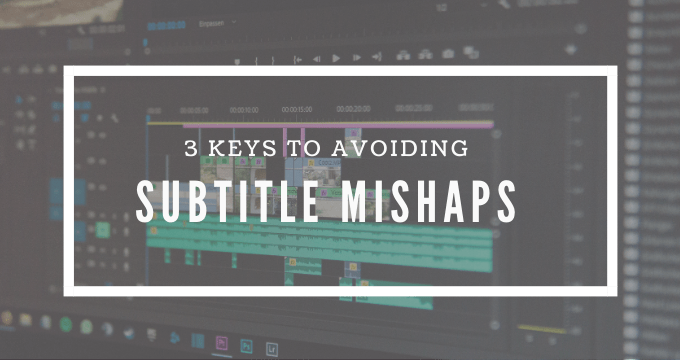While there are plenty of ways for video content creators to approach subtitling, it’s important that the end result is clear, accurate, and captures the original intent. At Language Department, we know how important it is to get the best subtitles possible. In the first article of our series on Subtitles, we take a look at how to spot a bad subtitle, and highlight why it’s so important to get it done right. Stay tuned for our next article to learn about how to make sure your subtitles are done right, every time.
When we watch movies or catch a broadcast or livestream, we often don’t think about how much we rely on subtitles and closed captioning for our understanding. Subtitles are necessary to make the video content accessible to everyone, no matter the circumstances. For viewers who need subtitles in different languages, the communication of the proper message is absolutely critical.
Sometimes the one thing that acts as the gateway to our understanding of an incredible film or video is its subtitles. Good subtitles faithfully recreate the voice and tone of a particular character, transmitting style and information in a few concise lines.
So what happens then, when the subtitles that viewers rely on are poorly translated, or worse, not captured properly? Aside from resulting in some pretty embarrassing errors, it’s possible that the target audience might miss the message entirely. Needless to say, they could end up getting quite a few mixed messages.
Here, we take a look at some examples of times that the subtitles really missed the mark, and offer some solutions to make sure that it doesn’t happen to your video content!
Misuse of translation service – In this case a native-speaking human translator could have helped problem-solve this.

Poor synchronization – The subtitles here are from an entirely different series!

Lack of expertise – This example speaks for itself…

Lackluster Machine Translation – The audio here was not quality assured, so the particular accent was missed entirely.

How can you make sure that your film and video content is safe from any subtitle mishaps? We’ve got 3 tips to make sure that bad subtitling doesn’t happen to you:
-
Use a quality subtitler
A great subtitler will make sure that your captions are localized and adapted for style and tone. If you want to ensure that any critical cultural attributes aren’t missed, your best bet is to invest in a high-quality subtitling agency; don’t risk doing it yourself or using a generic online subtitle generator.
-
Keep timing in mind
When implementing the translated subtitles into your video content, be sure that they are synced properly with your video imagery. If you don’t want to chance it, a full-service subtitle translation team can take the guesswork out of this for you.
-
Think globally
Consider subtitling the original content into additional languages. This could open up new markets and result in accessing more audiences across the world.
In a good subtitle creation process, there should be a team of expert subtitlers that can rely on each others’ expertise, so that the end product can be seamless and entertaining for any viewer, no matter what language. With this in mind, it goes without saying that having reliable, high quality subtitling backing your text is really important, and in the best interest of keeping your audiences entertained and well-informed.
When it comes to making sure that your video content maintains its high quality, make sure that you don’t make the same mistakes that some of the movie and video creators on our list did. At Language Department, we offer subtitling and closed caption translations that will make your work accessible to thousands more people around the world.
If you are curious about our subtitle and closed caption translations, feel free to get in touch, and we are happy to get you a free quote of our services. Our team is happy to work with you to make sure that your message is heard worldwide.




